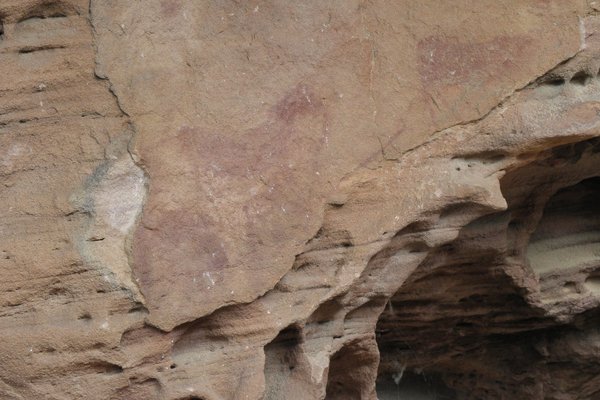Spain
Rock Art of the Mediterranean Basin
The Rock Art of the Mediterranean Basin on the Iberian Peninsula comprises the largest group of rock art sites found in Europe.
They consist of 758 prehistoric sites in eastern Spain and represent a distinct rock art tradition. They are mostly exposed in the open air. These rock art sites form an exceptionally large group; the figures are relatively small in size and depict scenes from the transition stage from hunter-gatherer to sedentary farmer.
Community Perspective: We think the number of locations is a joke (“If you need 758 locations to assert OUV, you can imagine how weak each one of them must be.”). If you want to visit some without the need for a specialist guided tour, check out the Sierra de Albarracín (as described by Els) or Monte Arabí (visited by Clyde) or El Cogul (Alexander) or Pedra de les Orenetes near Barcelona (Caspar, on public transport) or La Sarga (Watkinstravel, free tours on Sunday). Most of the rock art can only be “appreciated” from behind a fence. Hubert did a guided tour to the Abrigo Grande de Minateda.
Site Info
Official Information
- Full Name
- Rock Art of the Mediterranean Basin on the Iberian Peninsula (ID: 874)
- Country
- Spain
- Status
-
Inscribed 1998
Site history
History of Rock Art of the Mediterranean Basin
- 1998: Inscribed
- Inscribed
- Type
- Cultural
- Criteria
- iii
Links
- UNESCO
- whc.unesco.org
- Official
-
- spain.info — Albarracin
- turismodecastellon.com — Tirig
- Related
-
- e6000208.ferozo.com — All about the caves in the Valltorta
All Links
UNESCO.org
- whc.unesco.org — whc.unesco.org/
Official Website
- spain.info — Albarracin
- turismodecastellon.com — Tirig
Forum Discussion
- worldheritagesite.org — Locations to visit
Related Resources
- e6000208.ferozo.com — All about the caves in the Valltorta
News Article
- Aug. 19, 2015 translate.google.nl — Investigation into the placement of solar panels in La Serreta Cave
- April 23, 2014 rt.com — Thieves damage 5,000-yo rock in Los Escolares Cave
Community Information
- Community Category
- Archaeological site: Rock Art
Travel Information
Exact locations inscribed twice (or more)
Free entrance
Catalonia hotspot
Recent Connections
-
Perfect Inscriptions
1998 -
Recently discovered
"Art Rupestre del Pla de Petracos" (Cas… -
Catalonia hotspot
Pedra de les Orenetes can be easily rea…
Connections of Rock Art of the Mediterranean Basin
- Geography
-
-
Guadalquivir River
Cerro de la Caldera and Morciguilla de la Cepera
-
- Trivia
-
-
Serial sites with the greatest number of locations
758 separate locations (#1)
-
- World Heritage Process
-
-
Perfect Inscriptions
1998 -
Inscribed on a single criterion only
iii. to bear a unique or at least exceptional testimony to a cultural tradition or to a civilization which is living or which has disappeared -
Exact locations inscribed twice (or more)
Rock Art of the Mediterranean Bassin location no545 (Abrigo de la Ermita de San Urbez near Fanlo) situated within Pyrénées-Mont Perdu borders.
-
- Human Activity
- WHS on Other Lists
-
-
World Biosphere Reserves
Valle del Cabriel Biosphere Reserve (Spain 2019): "Rich cultural heritage remains the area include Villar del Humo, part of the Rock Art of the Mediterranean Basin on the Iberian Peninsula World Heritage site."
-
- Timeline
-
-
Built in the 9th millennium BC
"The dating of this art has been the subject of many years of debate among prehistorians. It is now generally accepted that the art is not Palaeolithic, because of the culture that it depicts, but its precise attribution - whether it began in the Epipalaeolithic (from c 10,000 to 5000 BC) or in the full Neolithic that followed - is still not fully established. The nomination dossier proposes an elegant partial reconciliation of the two points of view: ... This may interpreted as a bracket in time between c 8000 and 3500 BC." (AB ev)
-
- WHS Hotspots
-
-
Valencia Hotspot
-
Catalonia hotspot
Pedra de les Orenetes can be easily reached from Barcelona in a day with public transport + hiking/cycling. -
Andalusia hotspot
-
- Science and Technology
-
-
Recently discovered
"Art Rupestre del Pla de Petracos" (Castell de Castells, Alicante) was discovered in 1980.
-
- Visiting conditions
-
-
Free entrance
Some might have an entry fee, but a lot of them are free and there are no obvious major sites among the 727 locations.
-
News
- translate.google.nl 08/19/2015
- Investigation into the placement o…
- rt.com 04/23/2014
- Thieves damage 5,000-yo rock in Lo…
Recent Visitors
Visitors of Rock Art of the Mediterranean Basin
- Alexander Barabanov
- Alexander Lehmann
- Alikander99
- Allan Berry
- Ammon Watkins
- Ana Lozano
- Antonio J.
- Argo
- Atila Ege
- BaziFettehenne
- Bin
- Can SARICA
- Caspar
- Christravelblog
- Claire Bradshaw
- Clyde
- CugelVance
- Daniel Chazad
- David Berlanda
- DavidS
- Dimitar Krastev
- Dirk-pieter
- Dolemite92
- Dwight Zehuan Xiao
- Elia Vettorato
- Els Slots
- Erik Jelinek
- Errol Neo
- Evgenii
- Fan Yibo
- Femke Roos
- GeorgeIng61
- Hasco
- Hubert
- Ilya Burlak
- Ivan Rucek
- Jakob F.
- Jana and Matt
- Jarek Pokrzywnicki
- Jasam
- Javier
- Jean Lecaillon
- Jeanne OGrady
- João Aender
- Joel on the Road
- Jonas Kremer
- Jon Eshuijs
- Kbecq
- Lara Adler
- Lisu Marian
- Loic Pedras
- Lucio
- Luis Filipe Gaspar
- Lukasz Palczewski
- Maciej Gil
- Maciej Gowin
- marc Rouserez
- Martinacurra88
- Martina Rúčková
- Mikko
- nan
- Nick M
- Nihal Ege
- Olli-Pekka Turunen
- PabloNorte
- Patrik
- Paul Schofield
- Peltzi
- PeterH
- Peter Lööv
- Petteri
- Philipp Leu
- Philipp Peterer
- Piotr Wasil
- Porcho
- Randi Thomsen
- Roel Sterken
- Roger Ourset
- Roman Bruehwiler
- Sabrina Liebehentschel
- serghei.belous
- Sergio Arjona
- Shandos Cleaver
- Solivagant
- Stanislaw Warwas
- Stijn
- Svein Elias
- Szucs Tamas
- Tamara Ratz
- Taotao Chen
- Tarquinio_Superbo
- Thomas Buechler
- Thomas van der Walt
- Traveling Girl
- triath
- Vanessa Buechler
- Viaje al Patrimonio
- Vincent Cheung
- Walter
- Wieland
- WILLIAM RICH
- Wojciech Fedoruk
- Xiong Wei
- Zoë Sheng
- Zos M
Community Reviews
Show full reviews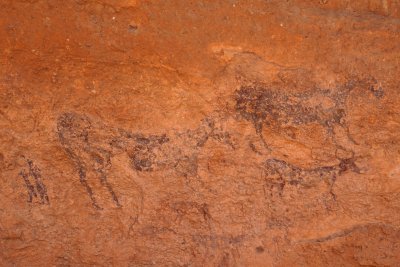
How to find among 758 sublocations those that are worth visiting? The problem is not only the large number, but also the fact that many sites are very difficult to access or are not accessible at all. And those that are accessible differ widely in the quantity and quality/visibility of the paintings. The information on the UNESCO website is not very helpful. Nevertheless, I was able to identify a few potentially worthwhile locations for my visit on Easter weekend 2024. And one of them, the Abrigo Grande de Minateda (not described in previous reviews), offered a guided tour that fitted into my itinerary.
I visited the Abrigo Grande de Minateda (photo) on a half-day trip from Elche. It is located around 100 kilometres east of Elche, a little over an hour by car. But the drive is definitely worth it. The paintings are on a panel about ten metres wide and one metre high: horses and bulls, but also many human figures. The paintings depict hunting scenes, possibly also dances or ritual ceremonies, but the interpretation is not always clear. The figures are not very large, but very filigree and detailed. I was amazed how well visible these paintings are. According to our tour guide, they were cleaned up about ten years ago. You can see the paintings quite well through the fence and can even take good photos (with zoom), the distance is about three metres. But of course, a guided tour is much better. You can see …
Keep reading 0 comments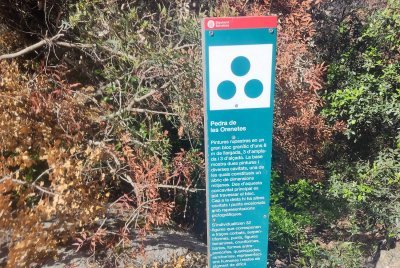
I visited the pedra de les orenetes on tuesday,the 28th of may. I am no aficionado of rock art sites. Thats for sure! However,the pedra de les orenetes site really suprised me in a very positive way.
But first things first I took the bus nr.500 at exactly 8.45 near the metro station "Artigues/Sant Adria in Barcelona. The bus was punctual and on the minute. Luckily, I arrived at the supposed bus stop around 15 minutes earlier.....well, I couldnt find the bus stop...it was not there where it was supposed to be according to google.I asked some locals but nobody had an idea where that bus stop could be.I was running out of time when I discovered the thin pole with the timetable of the bus 500.That pole was the bus stop. Actually,it is only 50 meters away from the place indicated by google,but bloody difficult to find as the time table can only be seen if you walk on the street and not from the side walk.What is more confusing is that just 20 meters away is a big bus stop with a covered waiting area that is served by many bus lines. Look out for the stand of a bike rental company with their bright red bikes....the pole/bus stop is between that bike stand and the street. Easy to find if you know what you're looking for. As for the bus its colour(blue) is quite different from the usual city buses+quite an old bus. It took me …
Keep reading 0 comments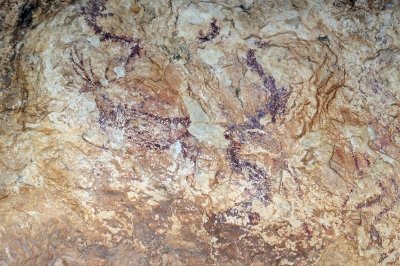
I can understand this one having a poor rating as it really shouldn't take 700+ locations to make your point. But with that many locations we are going to need a lot of reviews to figure out which ones to make an effort for.
Feb 2022, I found myself once again visiting the inlaws in Benidorm. I'll be the first to admit that as a hub it has to be one of the worst spots in the country as a base for visiting WHS but there seems to be numerous rock art locations scattered about nearby.
Rewind to 7 years ago and we attempted to visit La Sarga just outside of Alcoy but it has been fenced off. As tempted as I was to jump the fence and look on my own I am glad I didn't. This time around we came prepared. The site at La Sarga is accessible by free tours on Sundays nearly year round (Feb-Nov). You are supposed to make a reservation online for one of the hourly tours (10-1pm). The group size is 25 max but it was all so informal on site that I think you could just show up and join in. I was surprised at the popularity of the site on a random Feb Sunday with other Spaniards making up the rest of the group. The guide only spoke Spanish and I didn't understand most of it but the rock art there is about 7300 years old and without him …
Keep reading 0 comments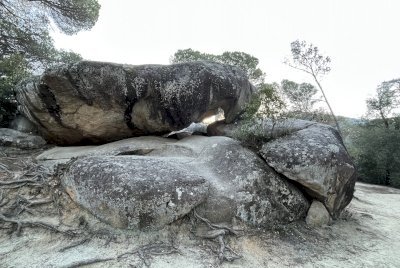
Before I really start my "review" of this site I have to anticipate that I am a great fan of rock art sites. I think they are sometimes among the most important cultural sites since they open to us a window into a time of the human brain of which we wouldn't know anything at all otherwise: It offers glimpses into human hunt practice but mainly into cult and artistry. I think the fantastic paintings at Chauvet are possibly the most important artworks of mankind considering their age, skill and originality. And while I think the Ice Cave Art offers almost nothing to the visitor who visits the caves the artwork linked to it is not only hugely important but equally exciting.
On the other hand this site must be one of the worst on the list for several reasons: The included artwork is not only very simple, yes primitive compared to the mentioned sites and many others but it is also much, much younger. Finally it includes 758 locations spread over half the country. If you need 758 locations to assert OUV you can imagine how weak each one of them must be. So how should it be visited? When should it be counted as visited? While I normally try to visit each element of a site that contributes to its OUV here it is hard to find out what you can visit at all.
I made my first attempt to approach this site when I drove …
Keep reading 0 comments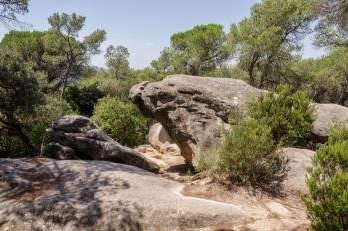
I only have a sample size of one, but I suspect that only a small portion of the locations that comprise this WHS offer any rock art that is worth the effort to see. The easy rule of thumb should be that if searching the internet does not yield explicit mention or photos of discernible rock art in a given location, it probably has little-to-none.
I went to see Pedra de les Orenetes because it is located not far from my recent base on Costa Brava. It turned out to be quite accessible: If you park in a dead end at the edge of Urb. La Pineda in El Bosc de Ruscalleda, it will take you only 15-20 minutes of walking on the relatively flat Ruta Prehistorica to reach Pedra.
Which turns out to be an expressive pile of rocks. If you are into rocks and hiking - great. If you are after prehistoric art - tough luck. All you will find is a couple of smudges that indicate where the drawings used to be. I allow that a recognition that an ancient human once drew on these rocks may be worthy of the WH inscription, but it's a stretch to count this location as an exhibit of the prehistoric art.
As is a stretch for me to count this WHS as visited. My personal definition of "visited" puts premium on the effort to see any inscribed component of a given site. The effort I made. But …
Keep reading 0 commentsAlexander Barabanov
Rock Art of the Mediterranean Basin
Rock Art of the Mediterranean Basin (Inscribed)
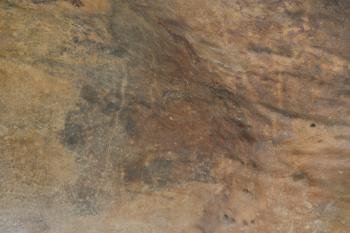
Visited Caves of El Cogul on the way from Poblet monastery to Zaragoza. Unfortunately due to time constraints arrived there right in the beginning of siesta. The place is located in the pleasant agricultural scenery in the outskirts of Cogul village. There is a small visitor centre and the access to the cave is fenced. I climbed the fence and made some picture of the cave, which is also covered by an iron lattice (it could only be open during visit time).
The paintings are of course not so bright but are quite visible. There are over 40 african-style figures painted, including humans and animals in black and red. The most famous and central is dance scene. There should be somewhere Roman inscription as well, but I couldn't identify it.
In overall nice place with easy access and not disappoitning paintings. Vistor centre probably has some useful information, will try to return here next time outside siesta time.
Keep reading 0 comments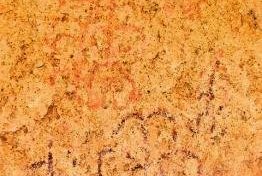
I visited this WHS in March 2016. Out of the 758 inscribed sites I focused on the Levantine rock art of Monte Arabí. Monte Arabí is a mountainous elevation with an altitude of 1,068m a few kilometres away from the town of Yecla in Murcia. It is dotted with a number of different caves with different geological formations, prehistoric engravings, prehistoric marks and prehistoric paintings. These range from simple geometric drawings to figures of humans and animals, including hunting scenes which are still exposed in open air and only protected with cage-like gates. Initially I had planned to visit the Cova dels Cavalls (which has probably the best inscribed example of a painted hunting scene) in Valltorta together with the new museum on my way to Teruel. Due to the Fallas festival I had to change my plans and so I decided to visit the Cueva del Mediodía, the Cueva de la Horadada (only geoligical formations), the Cantos de la Visera I and II and the Arabilejo and its cup and ring marks in the Campo de Cazoletas. I started with an early visit at the archaeological museum in Yecla, known as the Museo Arqueológico Municipal Cayetano de Yecla (MAYE). It has artefacts and information from 4 eras but my main focus for the day was the prehistoric era. There is quite a lot of information on the rock art of the Mediterranean basin in Murcia and the usual pottery, tools, bones on display. The most important artefact they have …
Keep reading 0 comments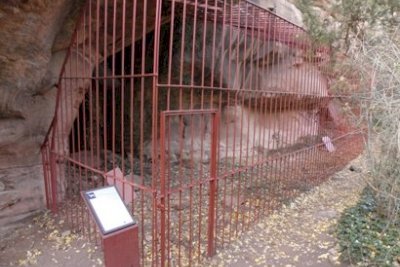
Out of the 727 nominated locations, I visited 4 or 5 panels in the Sierra de Albarracín. I say “4 or 5”, as I couldn’t identify the 5th on the long list of sites. But they are all in the same area, in a protected zone called Pinar del Rodeno. This is a popular hiking and climbing destination for Spanish tourists.
I started at the “Abrigo de la fuente del Cabrerizo”. This one is located about 4km south of the town of Albarracín. There’s a sign from the road and a small parking lot. You then have to hike downhill for about 20 minutes. First, you pass a good viewpoint with views of the red rocks and the maritime pines that are characteristic of this landscape. Then the path worsens and gets muddy and narrow. I wondered how many people go out all the way to see the rock paintings here. Fortunately, there are red arrows that show the way so you will not get lost. The paintings are protected by a red fence, and there is an information panel (in Spanish) about what you see. If you are able to see them at all, as they have no colour and are merely the outlines of animals. Pretty disappointing, but I had my daily exercise in getting there and would get some more climbing back up the steep hill for 20 minutes.
The other 4 panels are near the more busy Prado del Navazo recreation area. It is …
Keep reading 0 comments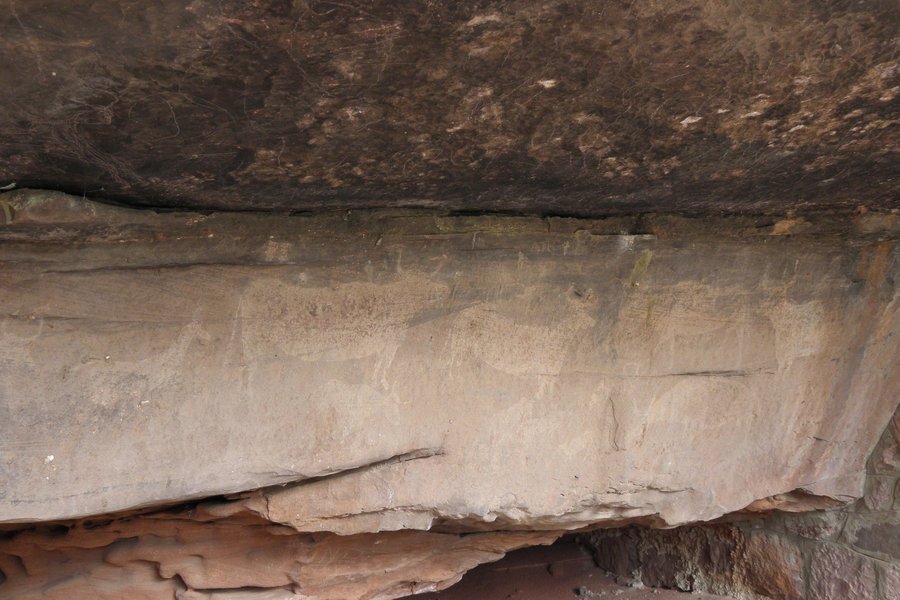
As noted, there are over 700 sites all over the Mediterranean area which are included in this list. Unfortunately the ancient people who made them were in much better shape than most of us today, so they are not very easy to reach! Also many of the sites are frankly a bit boring unless you have a special interest in rock art, like me, because the images are very difficult to see or there are not many of them to begin with.
Some sites in Murcia have recently been developed for better tourist access. Some examples are La Serreta and Los Grajos near Cieza (contact the museum in Cieza for a guide), and Cantos de la Visera near Yecla (contact the museum in Yecla). Others I have been to that have some tourist access and interpretive signs include Pla de Petracos and La Sarga, near Alcoi in Alicante (check with the museum for directions, they may also be able to send someone with you).
Probably the best place I know of to see some examples of this rock art is at the sites in the Valltorta area of Castellón. There is a fairly large rock art museum near Tirig, which has reproductions of some of the more interesting sites, and they arrange tours with a guide who will take you to the sites and show you the rock art. The sites are again not accessible if you have major mobility issues but the hike to most of them is fairly …
Keep reading 0 comments
I visited to Cuevas de la Ananas,which is located in the clad-forest valley,over three mountains and four villages. Those rock-paintings are of cultural importance to be suggested the style of the human life there. All rock-paintings are prohibited to be entered in where those were described;rock shelters,walls,and so on.But I asked the authority,in this case the city hall,to inroduce the shelters. Nowadays there are nearly 5000 visitors to the rock art and whose villas are interspersed in the basin,I heared. These are worth visiting because of the concentration and the diversity of prehistoric rock art,if you are interested in the art,and world heritage collector
Keep reading 0 comments
Yes, indeed this inscription is strange, but there is at least one place where you can enjoy visiting several mural paintings at once: Sierra de Albarracin (Teruel) inside "Paisaje protegido de los pinares de rodeno" park.
This place is located near Albarracín one of the most beautiful towns in Spain.
A panorama of a painting in http://www.albarracin.org/rutasierra/PinturasG.htm
All information in www.albarracin.org and www.sierradealbarracin.org
Regards.
Keep reading 0 comments
Having just looked at the inscription in more detail I have discovered that it is made up of a whopping 727 seperate sites!!.
This is one of the strangest inscriptions there is on the WH List, I am sure they are very justified but there are 727 of them!! They are scatered from Barcelona down to Gibraltar.
I am pretty sure I have visited at least one of these sites in the many times I have visited Spain, but I am not willing to count it as a site that I have visited properly.
I have a feeling I have visited some of the sites in the María and Alicante area when I was much younger, so I am adding this to the group of sites that I have not really visited but have seen, (this list is getting frustratingly long!!) oh well!
Keep reading 0 comments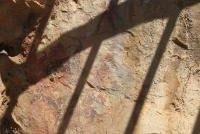
It was very hard to find on the Internet for our trip around Spain a rock art site of those being part of this WHS satisfying the criteria I had in my mind for choosing one of them: proximity to our Spanish itinerary, good accessibility without too much walking - they are often situated at high altitudes far away from main roads - … possibly a cave with a guided tour - but I didn’t find one available without booking and there is also the fact that this sites are mainly shelters.
Finally I chose the site of Cabra Feixet in Catalonia near El Perolló putting my trust in this two Spanish web pages: http://www.xtec.es/centres/e3001929/cabra/cabra2.htm and http://www.arqueomurcia.com/arterupestre/catalu/feixet.htm. From this descriptions with map it seemed to me that it was easily accessible, but I was wrong.
You have to take the road going from El Perolló to Rasquera and after 7 km you will find without problems on your left a sign telling you that the rock art site is 3,5 km from there (we didn’t notice that there was also written with pencil in French that it is quite impossible to reach it by car – maybe a desperate tourist had left it).
So we ventured with our car to a road that after 1 km turned out to be unsurfaced, extremely narrow and endless. We couldn’t turn back the car and go away and, risking to have an accident, had to arrive to the parking (it seemed incredible that …
Keep reading 0 comments
